From Rumor to Reality: General Esmail Qaani Remains on the Scene
WANA (Oct 15) – Over the past two weeks, anti-Islamic Republic media outlets and opposition-linked networks, such as Iran International, have attempted to mislead public opinion in Iran, the Resistance Axis, and even globally through various fabrications about Esmail Qaani, the commander of the Quds Force. It appears that these efforts are part of Israel’s psychological operations against the Resistance Axis, involving the dissemination of false information.
Esmail Qaani was appointed as the commander of the Quds Force of the Islamic Revolutionary Guard Corps (IRGC) in 2019 after the assassination of Qassem Soleimani. A close associate of Soleimani and a prominent figure in the Quds Force, Qaani has played a key role in strengthening the Resistance Axis in the region, particularly in Lebanon, Syria, and Iraq.
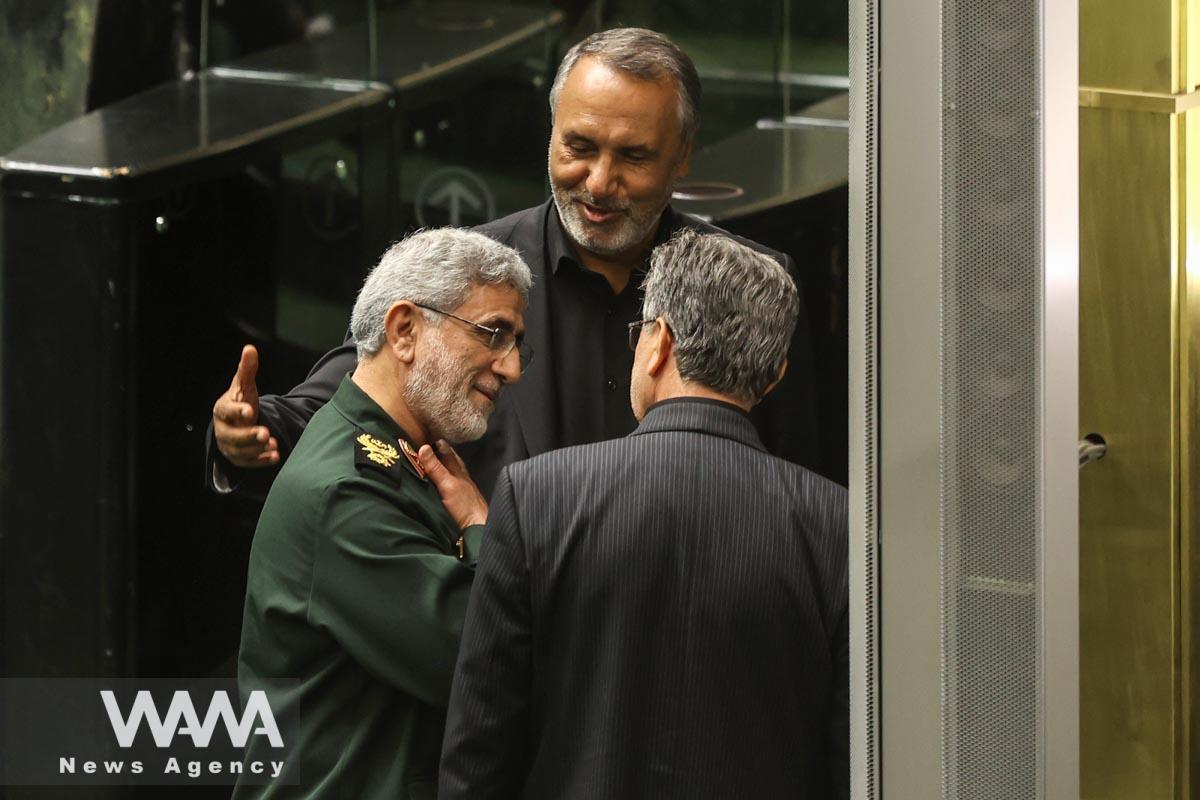
Brigadier General Esmail Qaani, the head of the Revolutionary Guards’ Quds Force, attends the opening ceremony of Iran’s 12th parliament in Tehran, Iran, May 27, 2024. Majid Asgaripour/WANA (West Asia News Agency)
As General Soleimani’s successor, he has taken on critical responsibilities in supporting resistance groups and countering Israeli influence and the presence of foreign forces in the Middle East. Because of this central role, he has been the target of numerous attacks and disinformation campaigns by opposition media.
During this period, significant efforts were made to spread rumors and false information aimed at intimidating and demoralizing the Iranian public, weakening the Resistance Axis, and reinforcing Israel’s position. This disinformation reached such a high level over the course of two weeks that it could be considered a record in rumor-mongering.
There is a saying now common in discussions on the developments in the Middle East and occupied Palestine: Zionists only succeed in psychological operations and deception, while the situation on the ground plays out differently.
The lies propagated by outlets like Iran International, Sky News Arabic, and even Middle East Eye stand out, and their pattern is notable:
1. Qaani’s presence at a Hezbollah meeting:
Iran International claimed that Israel launched an airstrike on southern Beirut on October 4, aiming to target Hashem Safieddine, a potential successor to Hezbollah leader Hassan Nasrallah. Some media outlets also reported that Qaani was present at the location.
The New York Times, citing sources, claimed that Qaani had been in Lebanon to meet Hezbollah officials. The IRGC has yet to release a statement clarifying his status, and no new photos or videos of him have been published.
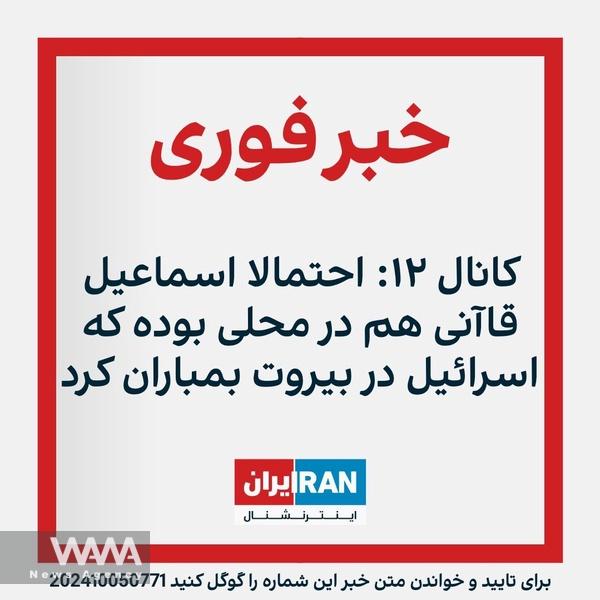
A report suggesting Esmail Qaani’s presence at a Hezbollah meeting targeted by an Israeli airstrike in southern Beirut. Social Media / WANA News Agency
2. Cutting communication with Qaani:
These media outlets also alleged that two Iranian officials told Reuters that Qaani traveled to Lebanon following Hassan Nasrallah’s death, and that there has been no news of him since Israel’s recent strikes on southern Beirut. One official said Qaani was in southern Beirut during the Israeli attack but was not meeting with Hashem Safieddine.
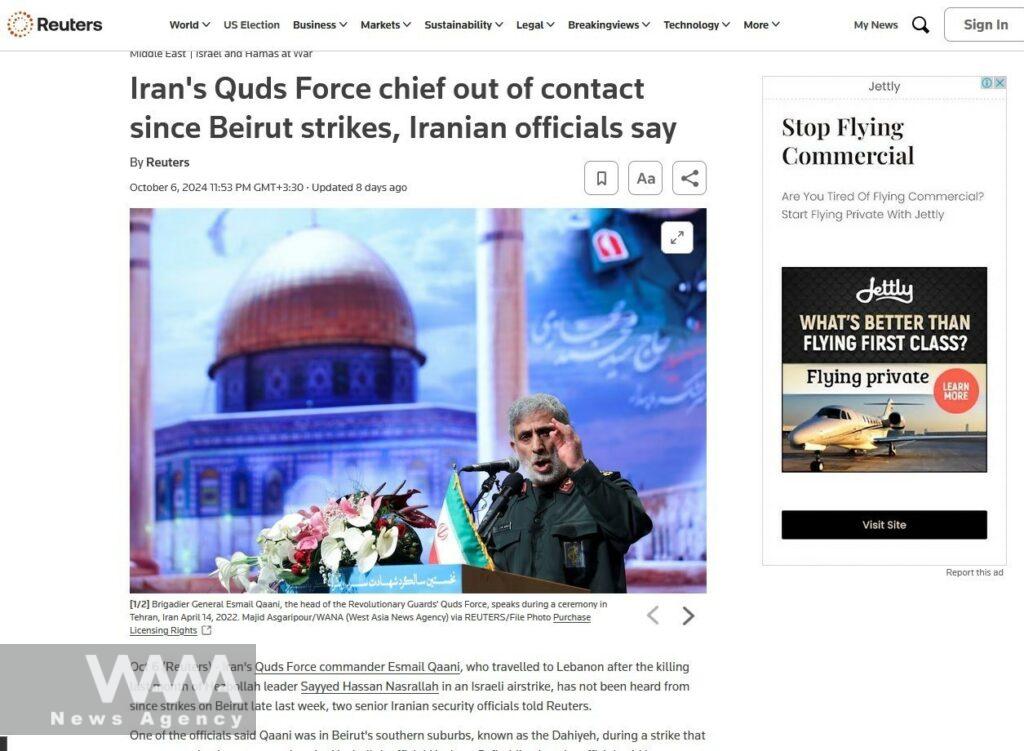
Reuters claims that communication with Qaani was lost following Israeli strikes in Lebanon. Social Media / WANA News Agency
3. Qaani’s possible death:
Iran International claimed that Esmail Qaani might have been killed by the Israeli military, though this was denied by media outlets close to the IRGC.
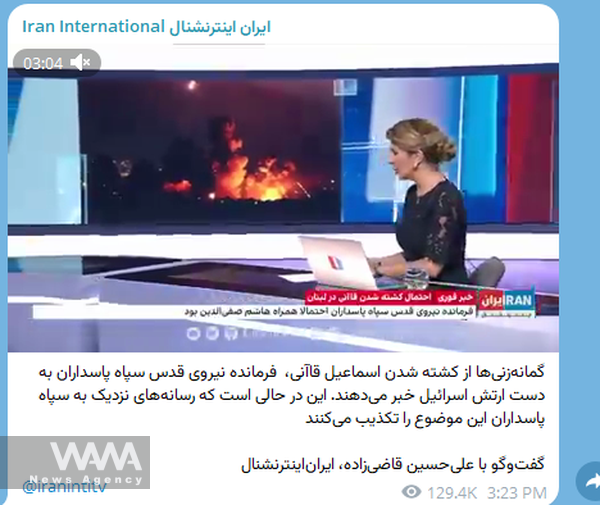
A speculative report on Qaani’s possible death in an Israeli military operation by Iran International. Social Media / WANA News Agency
4. Qaani’s family uninformed:
Iran International continued its claims, stating that Qaani’s family was also unaware of his status. A source informed Iran International that his family members did not know of his whereabouts.
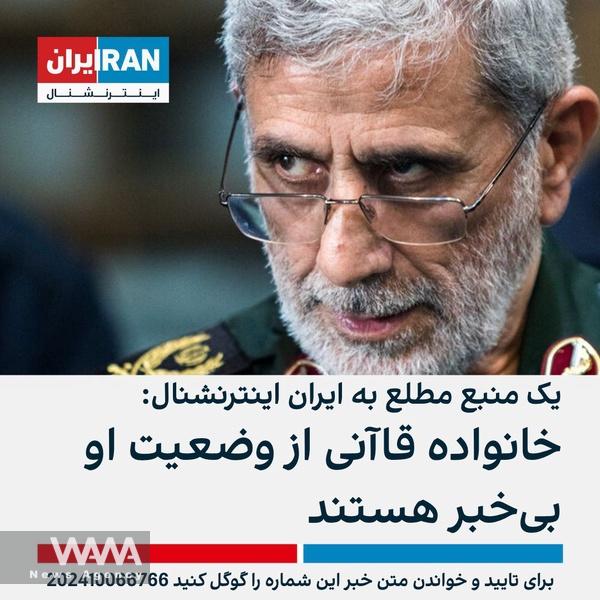
Iran International claiming that even Qaani’s family has no information on his whereabouts following recent events. Social Media / WANA News Agency
5. Hezbollah’s lack of information:
The outlet also claimed that Hezbollah did not have any information about Qaani’s situation.
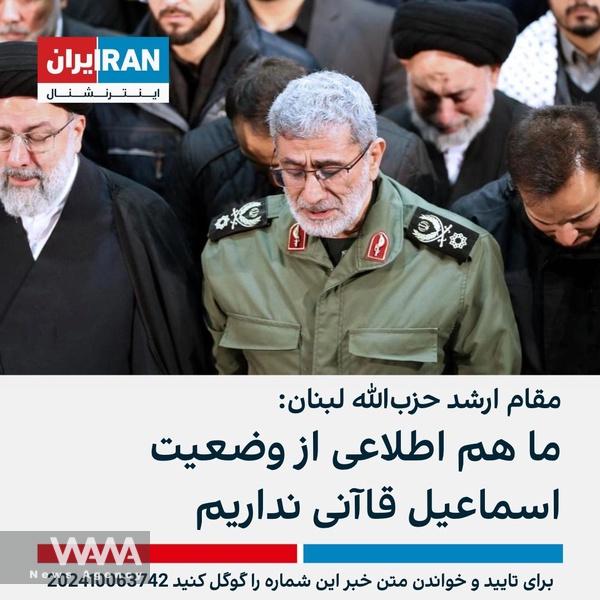
Claims that Hezbollah has no knowledge of Esmail Qaani’s current statuation. Social Media / WANA News Agency
6. Uninformed senior Iranian security officials:
Some opposition media outlets, manipulating previous reports, claimed that the IRGC’s Quds Force commander was missing.
In this vein, Voice of America reported that two senior Iranian security officials told Reuters that they had no information about Qaani since Israel’s attack on Beirut’s suburbs.
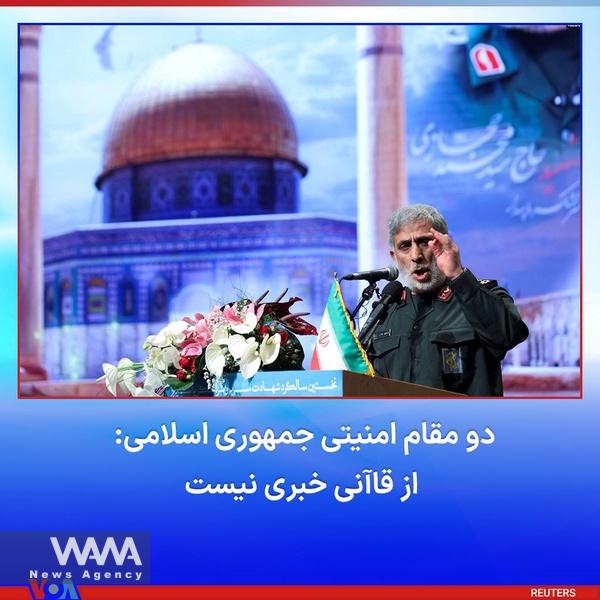
VOA allege that senior Iranian security officials are uncertain about Qaani’s status since the Beirut attacks. Social Media / WANA News Agency
7. Qaani being injured:
As part of this disinformation campaign, Deutsche Welle Persian cited an Israeli media outlet that reported Qaani was “likely” injured in an Israeli attack in Beirut on October 5.
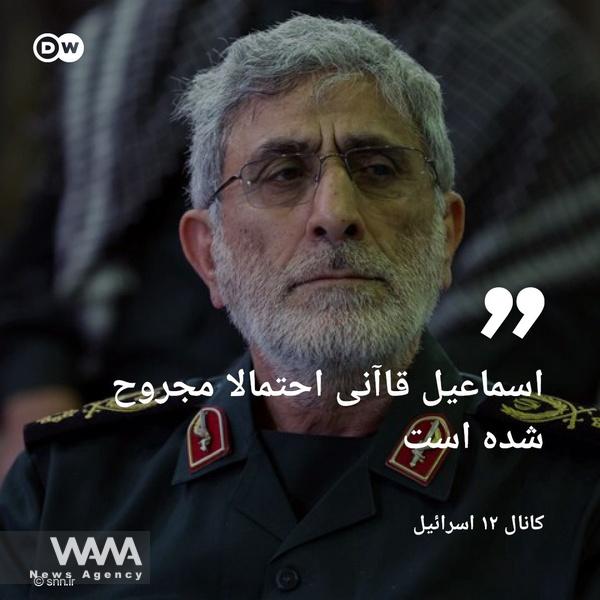
A report from Deutsche Welle Persian speculates that Qaani may have been injured during an Israeli airstrike in Beirut. Social Media / WANA News Agency
8. Interrogation of Qaani:
While these outlets were circulating reports of Qaani’s death, they suddenly pivoted to claim that he was under interrogation, alleging that his communication devices had been hacked.
According to Euro News, SkyNews Arabic, citing Iranian sources, reported that Qaani had a heart attack during the interrogation and was taken to the hospital. The report also claimed that his chief of staff was suspected of ties to Israel.
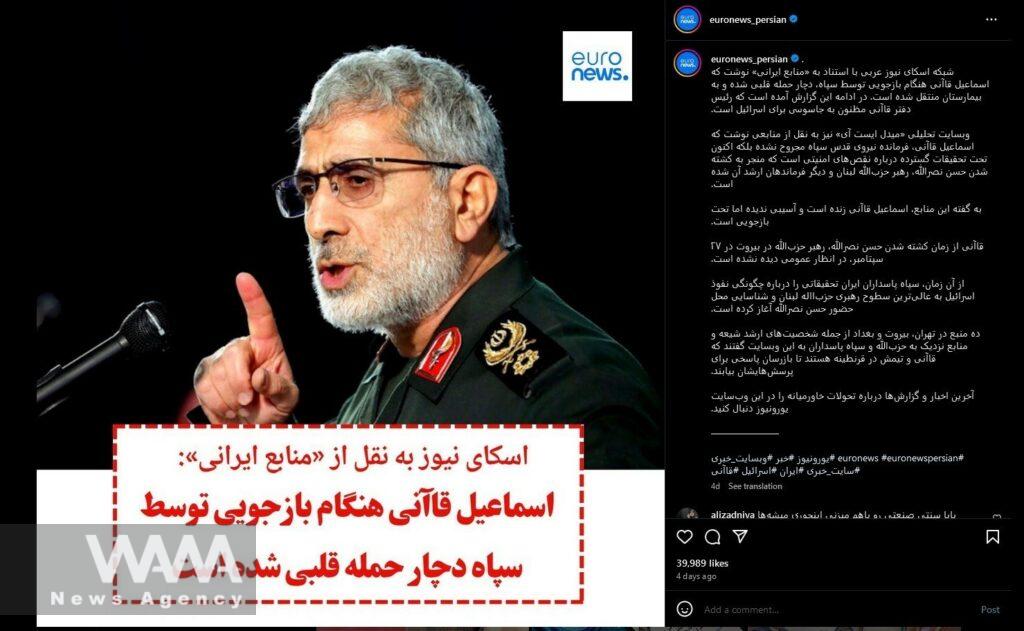
Claims that Qaani was under interrogation over security breaches and suffered a heart attack, later proven false.
9. House arrest:
After a period of fabricated reports, opposition media claimed that Qaani had been placed under house arrest.
Iran International stated that Middle East Eye, a media outlet close to the Qatari government, reported that Qaani and several of his close associates were under house arrest and being investigated for security breaches related to Hassan Nasrallah’s death.
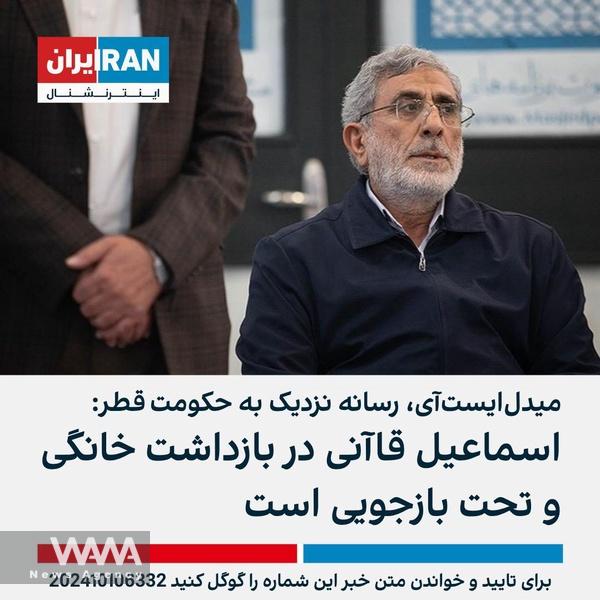
Iran International stated that Middle East Eye report that Qaani has been placed under house arrest amid suspicions of security breaches.. Social Media / WANA News Agency
10. Israeli scenarios:
The Israeli-affiliated Iran International sought to push the narrative of Israeli intelligence penetration into Iran, alleging Israeli infiltration into the Islamic Republic’s security institutions.
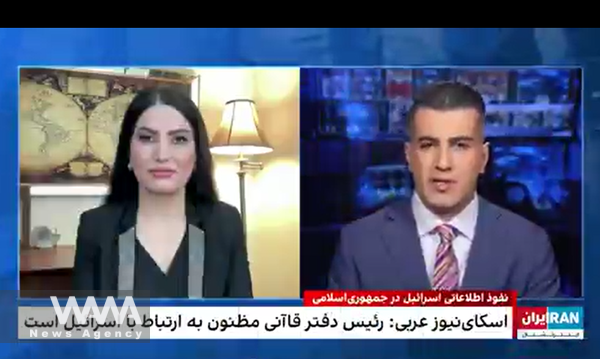
Reports implying Israeli intelligence infiltration into Iranian security agencies, tied to the disinformation surrounding Qaani. Social Media / WANA News Agency
While these lies were being spread, Iranian state media published numerous reports confirming Qaani’s well-being. Mohammad Bagher Ghalibaf also affirmed in an interview that Qaani was in good health and continuing his missions. Moreover, the Quds Force’s deputy commander recently stated at a ceremony that Qaani was in good health and actively carrying out his duties.
Ultimately, all these rumors and false scenarios were fully debunked when Esmail Qaani attended the funeral of General Niloofar in person today. He was present early in the morning at Tehran’s Mehrabad Airport to welcome Niloofar’s body from Baghdad, and live footage of him was broadcast on news networks. His participation in the funeral made it clear that the opposition media’s fabrications were baseless and that the truth had been revealed.
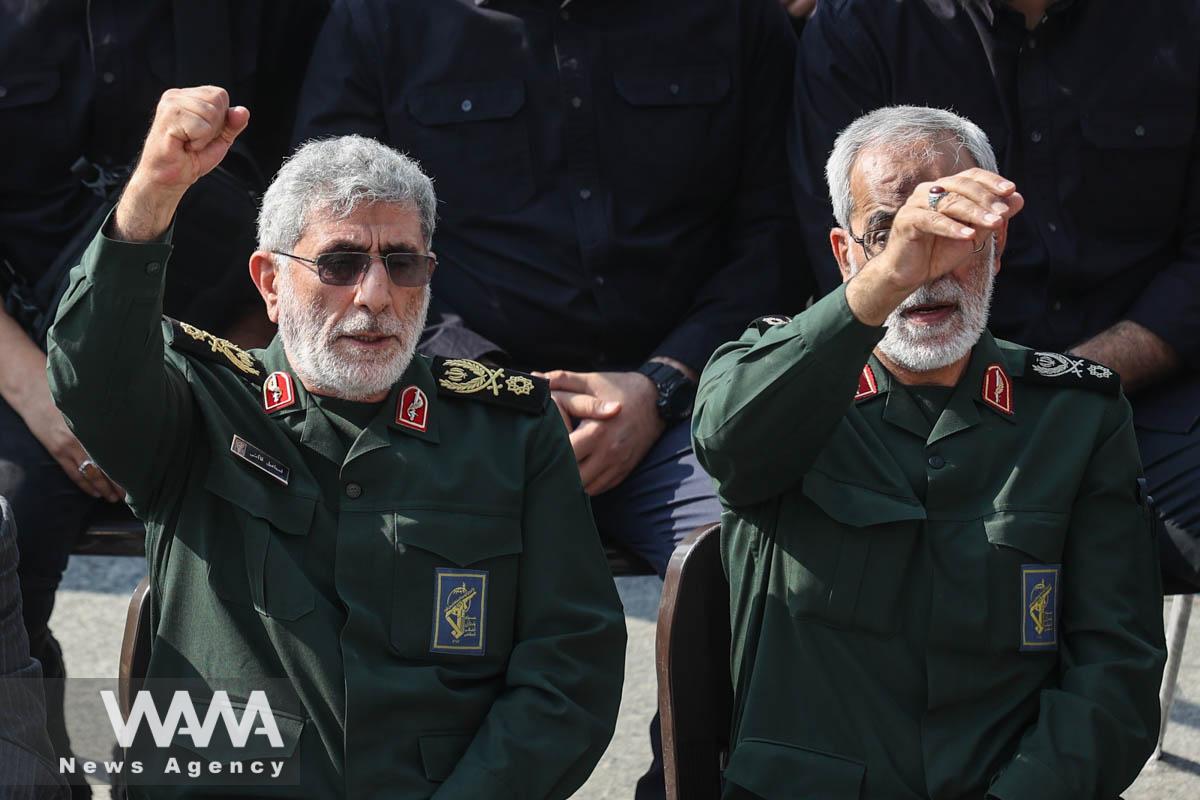
Brigadier General Esmail Qaani, the head of the Revolutionary Guards’ Quds Force, attends the funeral ceremony of Iranian Revolutionary Guards’ (IRGC) deputy commander Brigadier General Abbas Nilforoushan who was killed in the Israeli strikes on Beirut, in Tehran, Iran, October 15, 2024. Majid Asgaripour/WANA (West Asia News Agency)
The widespread disinformation campaigns targeting figures like Esmail Qaani often serve both psychological and intelligence-gathering purposes. One analysis suggests that opposition media disseminate false stories to provoke a reaction from targeted officials, potentially revealing sensitive information like their location or future plans. This tactic is recognized as a method in intelligence warfare, which can lead to more dangerous actions, such as assassinations or targeted attacks. These rumors help create the conditions for such operations.
On the psychological front, similar tactics were seen following the assassination of Hassan Nasrallah. Some media outlets accused Iran of passivity, and false reports were spread claiming Iran had purchased contaminated pagers or that an Iranian had leaked Nasrallah’s location, all with the aim of sowing doubt within the Resistance Axis.

Aftershock of an Expert’s Claim about Iran’s Role in Buying Pagers
WANA (Oct 13) – In recent days, remarks made by Masoud Asadollahi, a well-known expert, during a live television program in Iran have sparked one of the most controversial debates of the week. He unexpectedly claimed that the Islamic Republic of Iran acted as a mediator in purchasing pagers for Hezbollah in Lebanon. These […]
Through such methods, the enemies of the Resistance seek to weaken the morale of resistance forces and undermine public confidence in their military leaders. Their goal is to create instability within the Resistance and exploit any confusion to weaken the cohesion and authority of the movement. These actions are part of a broader media war that not only seeks to gather intelligence but also aims to tarnish the reputation and capabilities of resistance commanders in the region.












